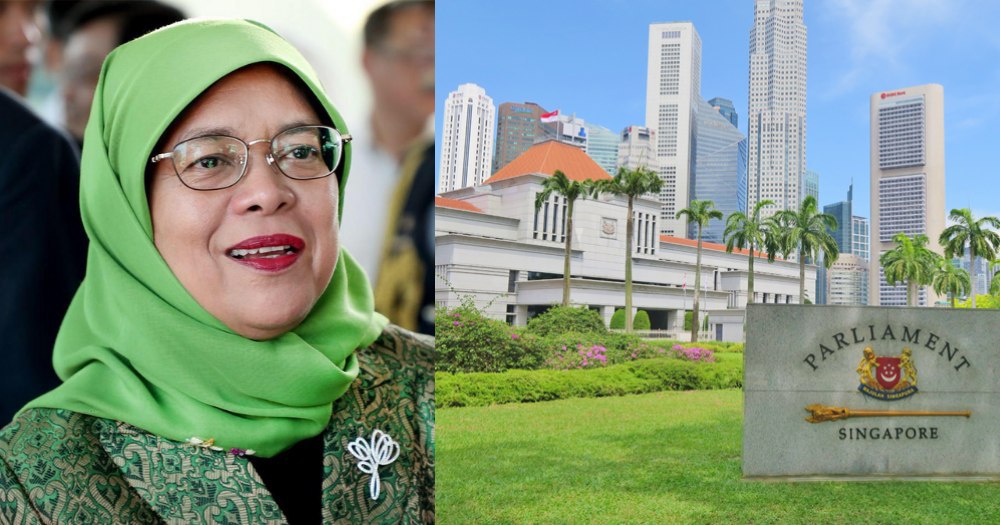Follow us on Telegram for the latest updates: https://t.me/mothershipsg
Parliament has been dissolved by President Halimah Yacob, paving the way for the next General Election to be held in 2020.
So what happens next?
As a quick refresher, here is the sequence of events that leads up to a general election, and how long they usually take:
1. The Electoral Boundaries Review Committee (EBRC) is formed.
The EBRC gives recommendations for the boundaries of electoral divisions through a report, which is normally released between two and seven months after the committee is formed.
For the 2011 and 2006 parliamentary elections, the report was released after about four months, and in 2015 it took just over two months, the fastest turnaround Singapore saw in its history.
This time round, the committee was revealed to have been formed on Aug. 1, 2019.
The EBRC released its report on March 13, 2020, which makes seven and a half months, a longer gap than the last three general elections.
2. Dissolve Parliament
After the report is issued, the next step is for the President to dissolve Parliament upon the advice of the Prime Minister.
Parliament must be dissolved at any time prior to the expiry of its five-year term, or else it will automatically dissolve at the end of the term.
As dictated by law, the general election must be held within three months of the dissolution of Parliament. But government will still continue even though Parliament has been dissolved.
The Prime Minister can appoint ministers from among the members of the most recently-dissolved Parliament, even after it has been dissolved, until the next Parliament convenes — as per Article 25 of the Constitution.
But in his speech, PM Lee confirmed that the current Cabinet will continue to govern:
"During the election period, the Government will continue to govern. The Cabinet remains in charge even after Parliament is dissolved. The public service will function normally. This is so in every General Election."
PM Lee emphasised this now because of the "vital importance" of the ongoing operations related to the Covid-19 response. The Multi-Ministry Taskforce and National Jobs Council will continue their tasks.
3. Writ of Election
On the same day, the President issues the Writ of Election to the Returning Officer.
This specifies the date and location where the nomination of candidates will take place.
4. Nomination Day
Nomination Day must take place between five days and one month from the issue of the Writ of Election.
This is the day prospective candidates produce themselves at an assigned centre to submit their nomination papers, election deposits and certificates.
If more than one individual or group of candidates are nominated for a particular electoral division, a notice of contested election is issued, which indicates when Polling Day will take place.
5. Campaigning Period
After Nomination Day, the campaign begins.
Campaigning can occur from after the notice of contested election is issued, up to the start of Cooling-off Day, which is the day before Polling Day.
The campaign period usually lasts for nine or 10 days, as the law states Polling Day must take place between 10 and 56 days after the notice is published.
6. Cooling-off Day
The day before Polling Day is Cooling-off Day.
This is the day when no candidate is allowed to campaign or run advertisements.
According to the Elections Department (ELD), the one-day "campaign silence period" is meant to give voters time to "reflect rationally on issues raised during the election before going to the polls".
You can check the list of prohibited activities and exceptions on Cooling-off Day at this link.
7. Polling Day.
And then, of course, comes Polling Day.
Polling Day is a public holiday, and normally falls on a Saturday. You may vote at your allocated polling stations at any time between 8:00am and 8:00pm.
Overseas voters will do the same at overseas polling stations, but they must close before polling ends in Singapore itself.
8. Sample Count
The vote counting process begins with a sample count of a random bundle of 100 ballots, which provides an early indication of the possible electoral outcome of an electoral division.
According to the ELD, sample counts serve two purposes:
- While counting is underway, but before it is completed and election results are announced, a sample count helps to prevent speculation and misinformation from unofficial sources.
- A sample count also helps election officials check against the election result for that electoral division.
9. Counting of votes
After the ballots are fully counted at one counting centre, the results are transmitted to the principal counting place, where the results from all of the counting centres in Singapore are compiled.
If the number of overseas votes have no impact on the outcome of the election, the candidate or group of candidates with the greatest number of votes are declared to be elected.
If the overseas votes could have an impact on the outcome, the number of votes cast in Singapore in favour of the candidate or group of candidates is announced, and the declaration of their election is deferred until the day that the overseas votes are counted.
After the overseas votes are counted, the final results will be published in the Singapore Government Gazette.
10. Destruction of Ballot Papers
After the vote count, ballot papers and other documents used in an election are sealed and kept in a safe place for six months.
Once the six months are up, they are to be destroyed, unless otherwise directed by the President, in order to ensure the secrecy of the vote.
Related story:
Top photos via Facebook / Halimah Yacob and Parliament website.
If you like what you read, follow us on Facebook, Instagram, Twitter and Telegram to get the latest updates.
